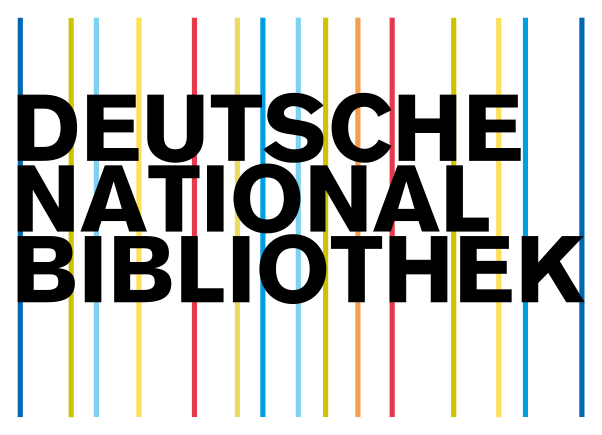Deep Convolutional Neural Networks for Brain Tumour Detection and Analysis
DOI:
https://doi.org/10.5281/zenodo.4018872Keywords:
Deep convolutional neural network, Brain MRI, Segmentation, Review, Magnetic ResonanceAbstract
Analysing brain tumour with no human intervention is considered as a vital area of research. However, this has been successfully achieved using deep convolutional neural networks (DCNNs). They have performed exceptionally well in solving computer vision problems and many others such as visual object recognition, detection and segmentation. It is used in detecting the brain tumour by optimising the brain images using segmentation algorithms which are highly resilient towards noise and cluster size sensitivity problems with automatic region of Interest (ROI) detection. One of the main reasons choosing DCNNs is due to its high accuracy and it is not necessary to perform manual feature extraction in these networks. In this research paper we present an extensive review on how convolutional neural networks (CNNs) techniques are applied in brain magnetic resonance imaging (MRI) analysis, their architectures, pre-processing, data-preparation and post-processing strategies. Analysing how different CNNs architectures have evolved, discuss their strategies and examine their outputs is the primary aim of this paper. Finally, we present the future of CNNs in which we mention few research directions in the coming years.
Downloads
References
H. Noh, S. Hong, B. Han, Learning deconvolution network for semantic segmentation, in: Proceedings of the IEEE International Conference on Computer Vision, 2015, pp. 1520–1528.
H. Noh, S. Hong, B. Han, Learning deconvolution network for semantic segmentation, in: Proceedings of the IEEE International Conference on Computer Vision, 2015, pp. 1520–1528.
M. Anthimopoulos, S. Christodoulidis, L. Ebner, A. Christe, S. Mougiakakou, Lung Pattern Classification for Interstitial Lung Diseases Using a Deep Convolutional Neural Network, IEEE transactions on medical imaging 35 (5) (2016) 1207–1216.
T. Brosch, L. Y. Tang, Y. Yoo, D. K. Li, A. Traboulsee, R. Tam, Deep 3D Convolutional Encoder Networks With Shortcuts for Multiscale Feature Integration Applied to Multiple Sclerosis Lesion Segmentation, IEEE transactions on medical imaging 35 (5) (2016) 1229–1239.
P. Moeskops, M. A. Viergever, A. M. Mendrik, L. S. de Vries, M. J. Benders, I. Iˇsgum, Automatic segmentation of MR brain images with a convolutional neural network, IEEE transactions on medical imaging 35 (5) (2016) 1252–1261.
Y. Bengio, A. Courville, P. Vincent, Representation learning: A review and new perspectives, IEEE transactions on pattern analysis and machine intelligence 35 (8) (2013) 1798–1828
A. Hasegawa, S.-C. B. Lo, M. T. Freedman, S. K. Mun, Convolution neural-network-based detection of lung structures, in: Medical Imaging 1994, International Society for Optics and Photonics, 1994, pp. 654–662.
A. Krizhevsky, I. Sutskever, G. E. Hinton, Imagenet classification with deep convolutional neural networks, in: Advances in neural information processing systems, 2012, pp. 1097–1105.
Y. Sun, Y. Chen, X. Wang, X. Tang, Deep learning face representation by joint identification-verification, in: Advances in Neural Information Processing Systems, 2014, pp. 1988–1996
K. Kamnitsas, C. Ledig, V. F. Newcombe, J. P. Simpson, A. D. Kane, D. K. Menon, D. Rueckert, B. Glocker, Efficient multi-scale 3D CNN with fully connected CRF for accurate brain lesion segmentation, Medical Image Analysis 36 (2017) 61–78.
O. Russakovsky, J. Deng, H. Su, J. Krause, S. Satheesh, S. Ma, Z. Huang, A. Karpathy, A. Khosla, M. Bernstein, et al., Imagenet large scale visual recognition challenge, International Journal of Computer Vision 115 (3) (2015) 211–252
C. Szegedy, S. Ioffe, V. Vanhoucke, A. A. Alemi, Inception-v4, inception-resnet and the impact of residual connections on learning, in: Proceedings of the Thirty-First AAAI Conference on Artificial Intelligence, February 4-9, 2017, San Francisco, California, USA., 2017, pp. 4278–4284.
S. Ioffe, C. Szegedy, Batch Normalization: Accelerating Deep Network Training by Reducing Internal Covariate Shift, in: Proceedings of The 32nd International Conference on Machine Learning, 2015, pp. 448–456.
W. Zhang, R. Li, H. Deng, L. Wang, W. Lin, S. Ji, D. Shen, Deep convolutional neural networks for multi-modality isointense infant brain image segmentation, Neuroimage 108 (2015) 214–224
T. Brosch, Y. Yoo, L. Y. Tang, D. K. Li, A. Traboulsee, R. Tam, Deep convolutional encoder networks for multiple sclerosis lesion segmentation, in: International Conference on Medical Image Computing and Computer-Assisted Intervention, Springer, 2015, pp. 3–11.
W. Liu, E. CN, Y. Wen, M. SCUT, Z. Yu, M. Yang, Large-Margin Softmax Loss for Convolutional Neural Networks, in: Proceedings of The 33rd International Conference on Machine Learning, 2016, pp. 507–516
L.-C. Chen, G. Papandreou, I. Kokkinos, K. Murphy, A. L. Yuille, Semantic Image Segmentation with Deep Convolutional Nets and Fully Connected CRFs, in: International conference on learning representations, 2015, http://arxiv.org/abs/1412.7062.
T. Paine, H. Jin, J. Yang, Z. Lin, T. S. Huang, GPU asynchronous stochastic gradient descent to speed up neural network training, CoRR abs/1312.6186, http://arxiv.org/abs/1312.6186
J. Ashburner, G. Barnes, C. Chen, SPM8 Manual, http://www.fil.ion.ucl.ac.uk/, [Online; accessed 18 May 2017] (2012)
M. Lai, Deep learning for medical image segmentation, CoRR abs/1505.02000, http://arxiv.org/abs/1505.02000
M. D. Zeiler, ADADELTA: an adaptive learning rate method, CoRR abs/1212.5701, http://arxiv.org/abs/1212.5701.
Downloads
Published
How to Cite
Issue
Section
URN
License
Copyright (c) 2020 Perspectives in Communication, Embedded-systems and Signal-processing - PiCES/ WorldServe Online

This work is licensed under a Creative Commons Attribution 4.0 International License.






